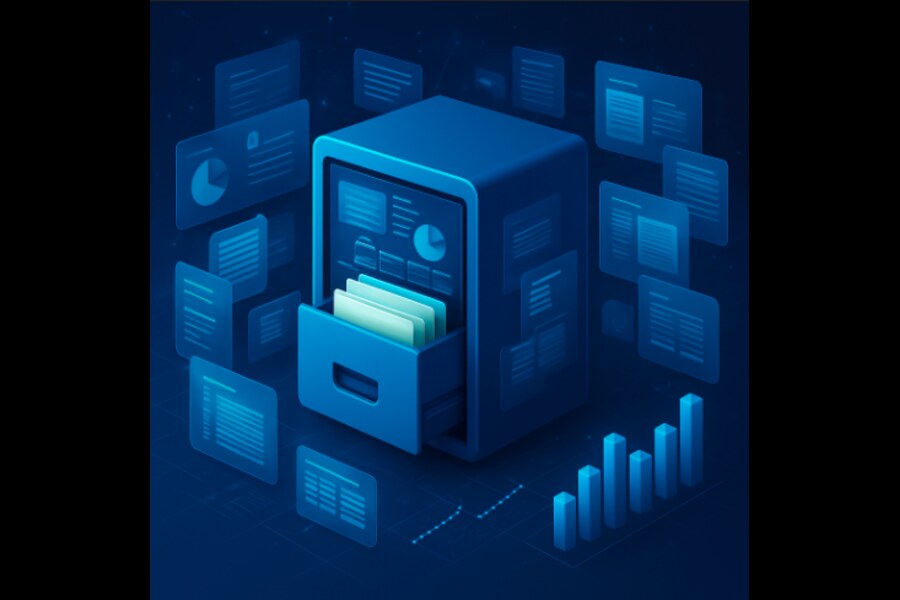A Data Room, often in digital format, is a secure repository where confidential information about a company—typically the target in a merger or acquisition—is stored. This information is reviewed by the acquiring company during the due diligence phase of the transaction. The purpose of the data room is to give the buyer a comprehensive view of the target’s business operations, legal standing, financial health, and strategic value, while maintaining strict confidentiality.
Think of the data room as a virtual vault containing all the documentation someone would need to understand the financial, legal, and operational health of a company. Without it, the buyer would be investing blindly.
Role of the Data Room in M&A
In an M&A deal, due diligence is a crucial process in which the acquirer evaluates all aspects of the target company before finalizing the transaction. The data room serves as the central hub where this evaluation takes place.
Think of it like this: buying a company is like buying a house. Before you make an offer, you want to inspect every room, check the plumbing, read the fine print on property documents, and maybe even look into the neighborhood’s history. The data room is the house tour—but for companies.
Types of Information Found in a Data Room
Here’s what you might typically find in a data room:
- Corporate documents: Articles of incorporation, board meeting minutes, organizational charts
- Financial records: Balance sheets, income statements, cash flow statements, tax returns
- Legal documents: Contracts, intellectual property (IP) filings, ongoing litigation details
- HR records: Employee contracts, benefits information, stock option plans
- Operational data: Supply chain agreements, sales and marketing data, customer contracts
- Technical documentation: Product designs, patents, software architecture (for tech companies)
Real-Life Example
Let’s consider the acquisition of LinkedIn by Microsoft in 2016 for $26.2 billion. During the due diligence phase, Microsoft would have needed access to LinkedIn’s:
- Membership and growth data
- Revenue models (especially from advertising and subscriptions)
- Technical infrastructure and data privacy policies
- Employee and executive contracts
- Existing partnerships and agreements
All this would be made available in a secure data room, accessible only to Microsoft’s deal team, their legal advisors, and financial analysts.
Physical vs. Virtual Data Rooms (VDRs)
Traditionally, data rooms were physical spaces located at the seller’s office or a neutral location, where printed documents were stored in binders. Security was tight—only authorized people could enter, no phones or copies allowed.
Today, however, most M&A transactions use Virtual Data Rooms (VDRs). These are online platforms that offer:
- Remote access from anywhere in the world
- Advanced security features (two-factor authentication, watermarking, audit logs)
- Granular permission controls (who can see, download, or print documents)
- Real-time Q&A modules between buyer and seller teams
Popular Data Room Providers (2025)
Here’s a list of leading VDR providers that are widely used in the M&A world:
| Provider | Known For |
| Datasite (formerly Merrill DataSite) | Robust M&A tools, used by large investment banks |
| Intralinks | Secure collaboration and complex M&A deal support |
| Firmex | User-friendly VDRs for mid-sized transactions |
| iDeals | Fast-growing provider with strong usability and security |
| DealRoom | Focuses on Agile M&A with project management features |
| Box (with enterprise features) | Used by tech-savvy companies for secure cloud collaboration |
| SecureDocs | Known for simplicity and affordability |
| Ansarada | AI-powered insights and readiness tools for sellers |
| Citrix ShareFile | Trusted in regulated industries like finance and healthcare |
Best Practices for Using a Data Room
Here are a few key tips for M&A professionals using a data room:
- Organize documents logically – Use clear folders (Legal, Financial, HR, IP, etc.)
- Use version control – Upload the latest versions of documents and label them
- Limit access – Only authorized users should see sensitive documents
- Audit regularly – Track who’s accessing which documents and when
- Use Q&A features – Allow buyers to ask structured questions within the platform
Benefits of Using a Virtual Data Room
- Security: Encryption, watermarks, and access controls keep sensitive data protected.
- Efficiency: Parties can access materials remotely 24/7, speeding up the M&A timeline.
- Transparency: VDRs provide audit trails to see who viewed what and when.
- Control: Sellers can grant or restrict access to certain folders or files based on the negotiation stage.
Conclusion
A data room is much more than a folder of documents—it’s a strategic asset in M&A. It shapes how efficiently the deal progresses and how confidently the buyer can proceed. For students preparing to work in investment banking, corporate law, or private equity, mastering the structure and function of data rooms is essential.
As digital platforms evolve and deals become increasingly global, the importance of a secure, well-organized, and intuitive data room cannot be overstated.

